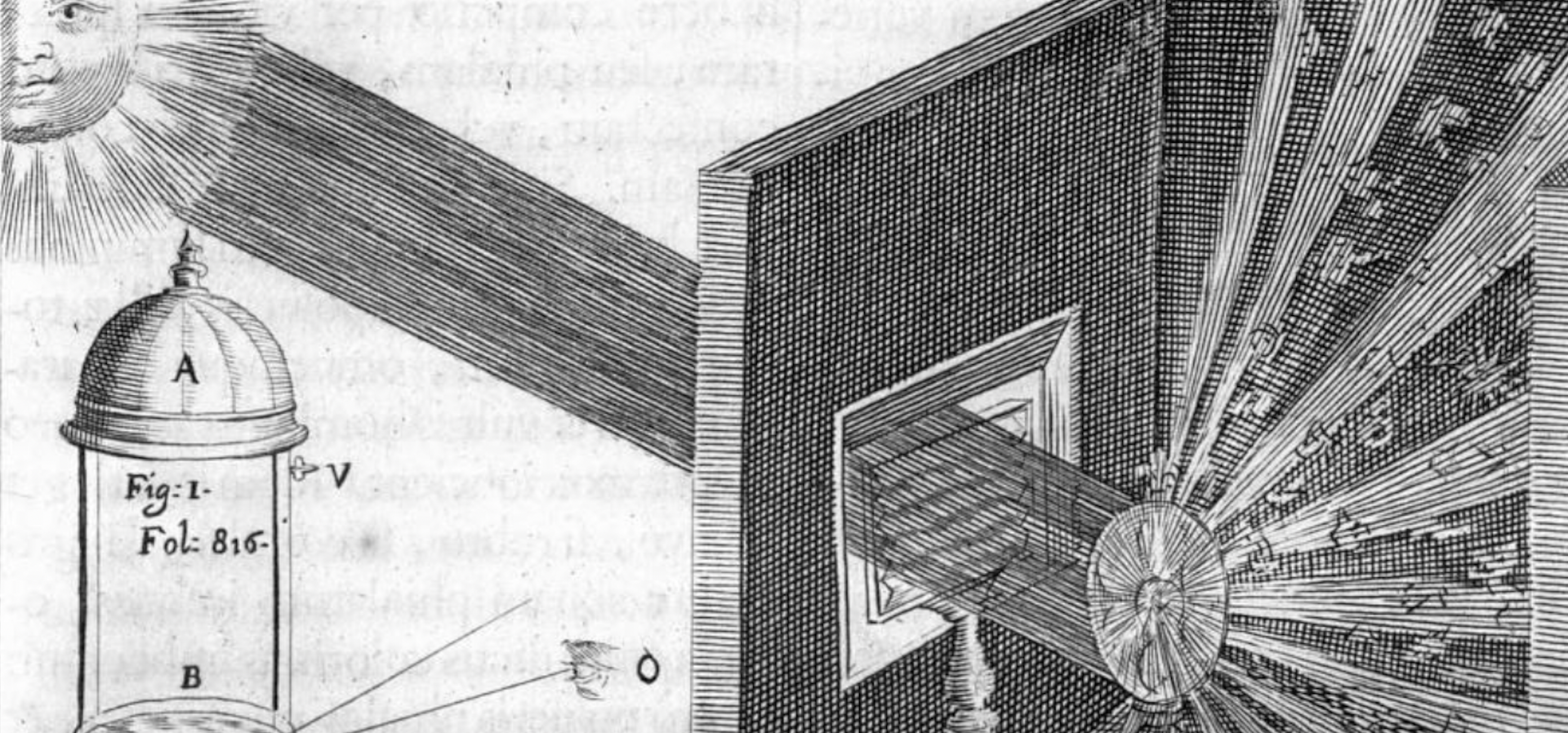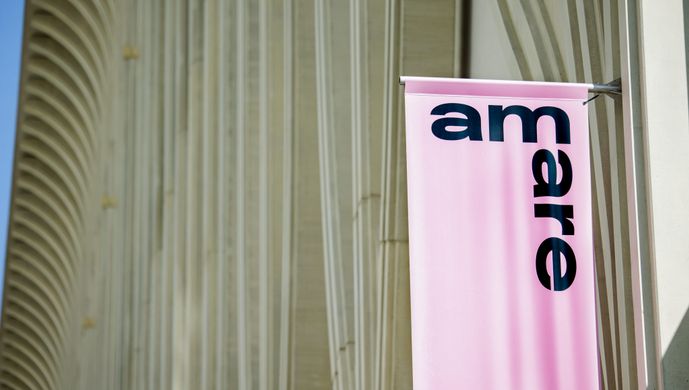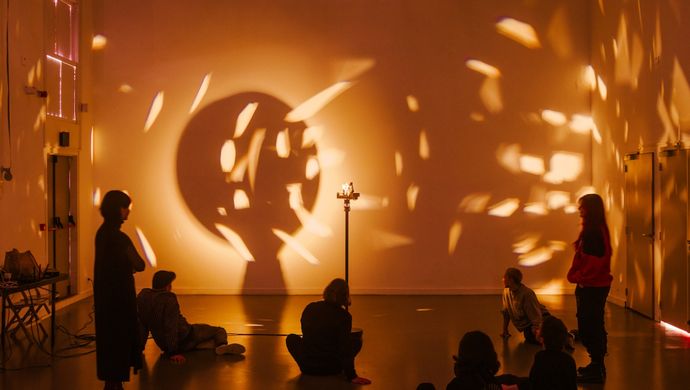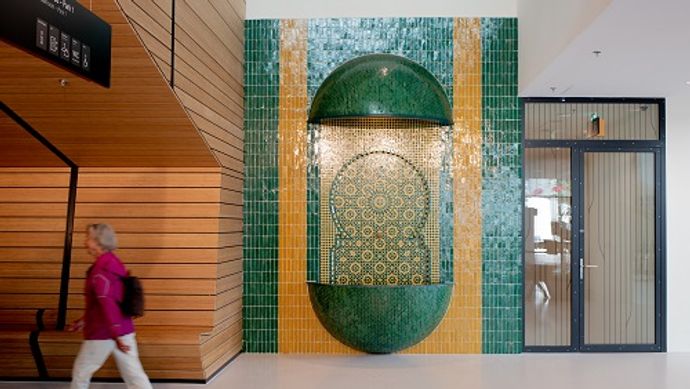
Amare’s entrance hall transforms into play of light
20 June 2024, article
With Vertical Video, we show new work every two months in Amare’s public spaces. This summer it is the enchanting Lichtspiel: Ars Anaclastica. We asked five questions to the artist, Zalán Szakács, to get to know more about the artwork.
In June, July and August your video artwork will be on display Amare. Can you tell us
more about its meaning?
This work is part of an ongoing artistic research project series where I explore historical pre-cinema light projections, integrating them with a site-sensitive approach to architectural spaces. In ‘Lichtspiel’ (Experiment No. 4), I use the refraction of light through kinetically controlled lenses to transform the entrance hall into a mesmerizing display of light and color, interacting with the architectural features of Amare. Each month, I will experiment with different kaleidoscopic lenses to analyze their impact on the space.
Is there a connection between Amare and your artwork?
This work is specially designed for the entrance hall, where it interacts with the vertical screen formats and the unique architecture. The light projections extend beyond the screen, creating a sense of expanded space through 360-degree reflections. Lichtspiel: Ars Anaclastica transforms the entrance hall of Amare into an ever-evolving play of light.
Can you tell us more about the making process?
After several years of researching early 17th-century projection techniques, I began transforming this media archaeological approach into site-sensitive experiments. This work builds on the principles from the 1646 book Ars magna lucis et umbrae (The Great Art of Light and Shadow) by Jesuit polymath Athanasius Kircher, who coined the term ‘ars anaclastica’ to describe the refraction of light through different materials.

For Amare, I am applying this principle to the unique architecture of the entrance hall, conducting light experiments tailored to the specific environment. These interventions transform and expand the spatial and perceptual understanding of the space. In this work, the projector is used as a light source to project light, not images. Abstract images emerge through the interplay of light and kinetic lenses. This process removes the image from the confines of the screen, transforming the entrance hall into a 360-degree light-play environment.
The work is created in collaboration with Nick Mansveld (technical production and design).
What else do you do as an artist and where does your inspiration come from?
I am an artist interested in bringing together immersive art, scenography, and media theory research. Through my works, I explore the relationship between space, body, and technology, resulting in multi-sensory experiences that include elements such as light, sound, smell, tactility, and movement. My projects stem from thorough historical investigations, which often involve forgotten historical innovations in media and lighting techniques. My inspiration for my artistic practice ranges from 17th-century optical experiments throughout 18th-century phantasmagoria projections to the expanded cinema experiments of the 60s and 70s.
What do you hope passers-by and visitors take away from your video artwork?
I hope that they experience a different feeling of the space than they already know – a perceptual experience through their bodies when the kinetic light projections are shining on them. The work then allows people to experience the essence of video and cinema – the moving light.




